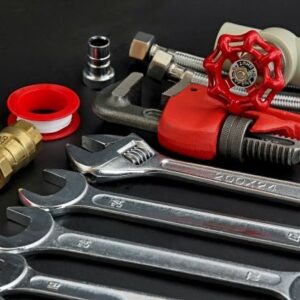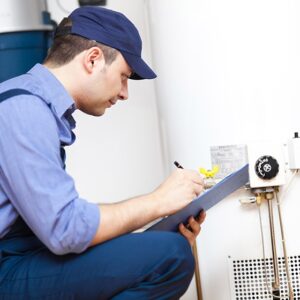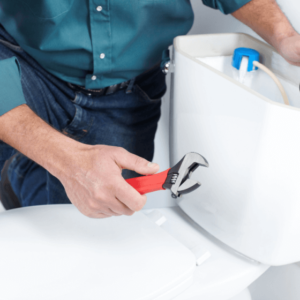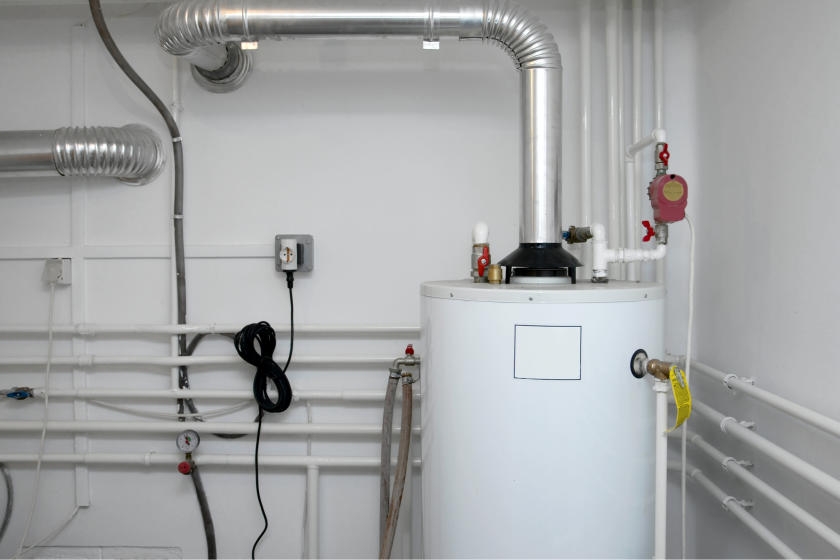A water heater is a necessary major appliance for many households. From heating water for showers and baths to running a dishwasher or washing machine, it is a resource that homeowners depend on. Performing routine maintenance will help you keep it running smoothly and efficiently for a long time to come without the chance of a cold shower.
Step 1: Know Your Water Heater
Before starting any maintenance, consult your water heater’s manual for specific information about your particular model and to familiarize yourself with how it operates. If you don’t have the manual or have misplaced it, try the manufacturer’s web site to find a copy or to find out how to get one. You should perform the maintenance steps on your water heater annually to help keep it operating efficiently.
Safety Alert!
Always wear gloves and safety goggles while performing maintenance on your water heater.
Step 2: Check the Pressure Relief Valve
Turn off electricity to the heater by shutting off power at the breaker switch (for an electric heater) or turn the gas switch on the heater to pilot (for a gas heater). Then turn the cold-water supply valve to shut off water to the heater. Place a bucket under the overflow pipe connected to the Temperature Pressure Relief valve (TPR). This valve releases excessive temperature and pressure buildup inside the tank. Lift the lever on the valve. You should see hot water discharge from the overflow pipe, or hear air and see vapor escape from the valve. If nothing happens when you open the valve or water continues to pour out, you may need to replace the valve. You can remove it with a pipe wrench. Drain the tank halfway before removing the valve.
Step 3: Drain and Flush Out the Tank
You should flush out your water heater’s tank at least once a year to keep the heater working at full capacity and extend its life. Inside, sediment can build up in the tank and reduce the water heater’s efficiency as well as clog up water lines. Drain all water from the tank by connecting one end of a garden hose to the tank’s drain valve and the other end, preferably to a nearby drain or outdoors. Open the drain valve with the TPR valve open and let all the water drain from the tank. The sediment will be removed with the drained water. When all water has drained, close the drain valve, disconnect the garden hose and close the TPR valve.
Step 4: Check the Anode Rod
In most water heater tanks there is a sacrificial anode rod, which is a long, steel-wire rod covered with layers of magnesium or aluminum. The rod protects the inside of the tank from corrosion that can develop over time by “sacrificing” itself to the corrosion. The rod is designed to corrode instead of the tank and draws the corrosion through an electro-chemical reaction. Because they eventually wear down, anode rods need to be checked periodically and replaced when necessary.
Anode rods should be checked annually, although they can last for a few years. The life of an anode rod can vary, depending on whether you have hard water or if you use softening agents to soften your water. Softeners often speed up corrosion. Once the rod corrodes and wears away, corrosion begins to occur on the inside of the tank, which can weaken the tank and shorten its life. This can lead to an expensive replacement of the heater.
Remove the rod by unscrewing it from the top of the water heater. Use a socket wrench on the rod’s hex head to loosen it and then unscrew the rod and remove it from the tank. Wipe the rod with a rag to remove any calcium carbonate buildup that has collected on it, which can obscure the state of the rod. Look at the rod closely to see if any of the steel wire center is exposed. If there is less wire showing than the outer sacrificial layer, the rod can still be used. If more of the wire is showing, then it needs to be replaced. Also, check the anode rod’s diameter. New rods are about ¾” in diameter. If the rod’s diameter is less than half of that, the rod should be replaced.
Step 5: Refill Tank and Return Power
You can now refill the tank with water and reactivate the gas or electricity supply to the water heater. Restore power at the breaker and/or turn the heater’s gas switch from pilot to the “on” setting. Open all the hot water spigots in your home and then turn the cold-water supply valve to begin refilling the tank. Check the spigots to ensure water is flowing to them and then shut them off.
Helpful Tips
Check the temperature setting on the heater. It should be set at 120 degrees maximum. Anything hotter can be dangerous and cause scalding. You can reduce your energy costs by lowering the temperature 10 degrees or more.
Turn the thermostat to its lowest setting when you’re away for a long weekend or on vacation to also save on energy costs.
Step 6: Insulate the Heater and Water Pipes
Because water heaters can be inefficient, it is important to insulate your hot water tank with a water heater blanket. This can save you approximately 4 to 9 percent in water heating costs, according to the U.S. Department of Energy. Your local True Value hardware store has a selection of precut water heater blanket kits to choose from. The kits include the insulation blanket and tape to fasten it on. Simply follow the directions to wrap the blanket around the water heater, making necessary cuts with a utility knife to leave access panels, valves, and controls uncovered. Fasten the blanket in place with the provided tape.
Safety Alert!
Follow manufacturer’s instructions carefully. If not installed correctly, a blanket can be a potential fire hazard on a gas water heater. Keep the blanket away from the flue and make sure the air to the burner isn’t obstructed.
Insulate pipes using pipe insulation kits to also help save energy and lower water-heating bills. Before insulating, measure the pipe to be sure you get the right fit. Make sure the pipe insulation kit you choose includes adhesive tape or contact cement for sealing. The most common pipe insulation is a tubular foam sleeve slit lengthwise. Tubes without slits are designed for installation over new piping, but they can easily be slit with a sharp utility knife. Open the pipe insulation along the slit, press it onto the pipe, and seal it with an adhesive tape or contact cement to prevent summertime condensation.
Good job! You have now taken the steps to ensure your water heater is operating at its peak performance.
Project Shopping List
Here’s what you’ll need to complete this project successfully.
- Gloves
- Safety goggles
- Bucket
- Pipe wrench
- Garden hose
- Anode rod (optional)
- Socket wrench
- Rag
- Water heater blanket kit
- Utility knife
- Pipe insulation kit












